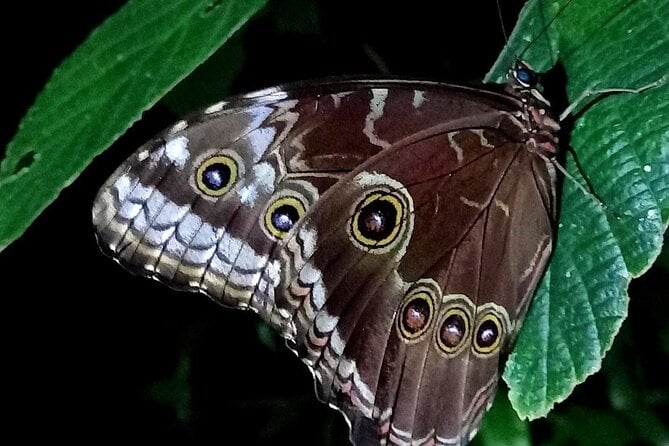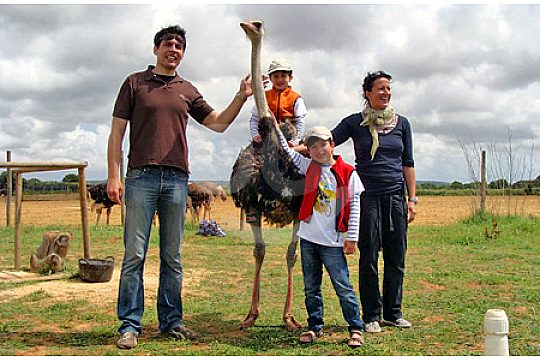Becoming A Night Hunter: Mastering The Art Of Nocturnal Wildlife Observation

Table of Contents
Essential Gear for Nighttime Wildlife Viewing
Successful nocturnal wildlife observation hinges on having the right equipment. Investing in quality gear will significantly enhance your experience and increase your chances of spotting elusive creatures.
Choosing the Right Light
The wrong type of light can scare away nocturnal animals. Red light is preferred because it minimally disrupts their night vision.
- Red light LED headlamps: These provide hands-free illumination while minimizing light pollution. Look for headlamps with adjustable brightness settings for versatility. Consider models from reputable brands like Black Diamond or Petzl.
- Infrared spotlights: These are invisible to the naked eye but illuminate the scene for your camera or binoculars equipped with infrared capabilities. They're excellent for observing wildlife without disturbing them. Note that these often require specialized equipment.
- Red filter for existing flashlight: If you already have a flashlight, a simple red filter can significantly reduce its impact on nocturnal animals. These are inexpensive and readily available online.
Optics for Low-Light Conditions
High-quality optics are essential for observing wildlife in low-light conditions. Large objective lenses gather more light, providing brighter images.
- High-quality binoculars (8x42 or 10x42): 8x42 binoculars offer a good balance of magnification and field of view, while 10x42 provides greater magnification for distant subjects. Look for models with fully multi-coated lenses to maximize light transmission. Brands like Nikon, Swarovski, and Zeiss are known for their quality.
- Spotting scope with tripod: For longer-range observations, a spotting scope provides significant magnification. A sturdy tripod is crucial for stability.
- Image-stabilized binoculars: These advanced binoculars compensate for hand shake, resulting in clearer images, particularly useful in low light. They are more expensive but worth considering for enhanced image quality.
Clothing and Personal Safety
Appropriate clothing and safety precautions are paramount for a safe and successful nighttime wildlife viewing experience.
- Dark, neutral-colored clothing: Camouflage clothing helps you blend into your surroundings, minimizing your impact on wildlife.
- Waterproof boots: Choose sturdy, waterproof boots suitable for the terrain you will be navigating.
- Insect repellent: Depending on the location and time of year, insect repellent is crucial to protect yourself from mosquito bites and other insect-borne diseases.
- First-aid kit: Always carry a well-stocked first-aid kit for minor injuries and emergencies.
Locating and Identifying Nocturnal Wildlife
Understanding animal behavior and selecting appropriate locations is vital for successful nocturnal wildlife observation.
Understanding Animal Behavior
Nocturnal animals have unique behaviors and activity patterns. Learning these patterns increases your chances of spotting them.
- Research local nocturnal species: Familiarize yourself with the nocturnal animals found in your area. Local wildlife guides and online resources are invaluable.
- Learn to identify animal tracks and scat: Tracks and scat provide valuable clues about the presence and activity of nocturnal creatures.
- Utilize field guides and apps for sound identification: Many nocturnal animals are identifiable by their calls. Field guides and smartphone apps can help you identify different sounds.
Choosing the Right Location
The location significantly impacts your chances of success.
- Areas with minimal light pollution: Light pollution can disrupt the natural behaviors of nocturnal animals. Choose areas far from city lights.
- Habitats known for nocturnal wildlife: Research habitats like forests, meadows, and wetlands that are known to support diverse nocturnal animal populations.
- Respect wildlife boundaries and leave no trace: Always maintain a respectful distance from animals and leave the area as you found it. Avoid disturbing their habitats or leaving any trace of your presence.
Photography and Documentation for Nocturnal Wildlife Observation
Capturing images of nocturnal wildlife can be challenging but rewarding.
Camera Settings and Techniques
Specialized techniques are necessary for capturing quality images in low light.
- High ISO settings: Increase the ISO to maximize light sensitivity, but be aware of potential noise.
- Long exposure photography: Long exposures capture more light, leading to brighter images, but require a stable tripod.
- Fast lenses (wide aperture): Lenses with a wide aperture (low f-number) allow more light to reach the sensor.
- Sturdy tripod: A stable tripod is crucial for sharp images during long exposures.
Ethical Considerations in Wildlife Photography
Ethical practices are essential to ensure the well-being of the animals.
- Maintain safe distance: Never approach animals too closely. Use binoculars or a telephoto lens to observe and photograph them from a distance.
- Use minimal light: Minimize the use of artificial light to avoid disturbing the animals.
- Respect wildlife laws: Adhere to all local wildlife laws and regulations regarding photography and observation.
Conclusion
Mastering the art of nocturnal wildlife observation is a rewarding experience. By equipping yourself with the right gear, understanding animal behavior, and employing ethical photographic practices, you can become a skilled night hunter. Remember to prioritize safety and respect for wildlife and their environment. So, grab your red light headlamp, your binoculars, and embark on your journey into the captivating world of nocturnal wildlife observation!

Featured Posts
-
 James Gunn On Henry Cavill The Truth Behind The Superman Recasting
May 11, 2025
James Gunn On Henry Cavill The Truth Behind The Superman Recasting
May 11, 2025 -
 Boris Johnson Ataque De Avestruz Durante Visita Familiar A Texas
May 11, 2025
Boris Johnson Ataque De Avestruz Durante Visita Familiar A Texas
May 11, 2025 -
 Bundesliga Champions Bayern Munich A Winning Send Off For Mueller
May 11, 2025
Bundesliga Champions Bayern Munich A Winning Send Off For Mueller
May 11, 2025 -
 Holstein Kiels Defeat Werder Bremen Secures Comfortable Victory
May 11, 2025
Holstein Kiels Defeat Werder Bremen Secures Comfortable Victory
May 11, 2025 -
 El Incidente Del Avestruz Boris Johnson Y Un Momento Familiar Inesperado En Texas
May 11, 2025
El Incidente Del Avestruz Boris Johnson Y Un Momento Familiar Inesperado En Texas
May 11, 2025
